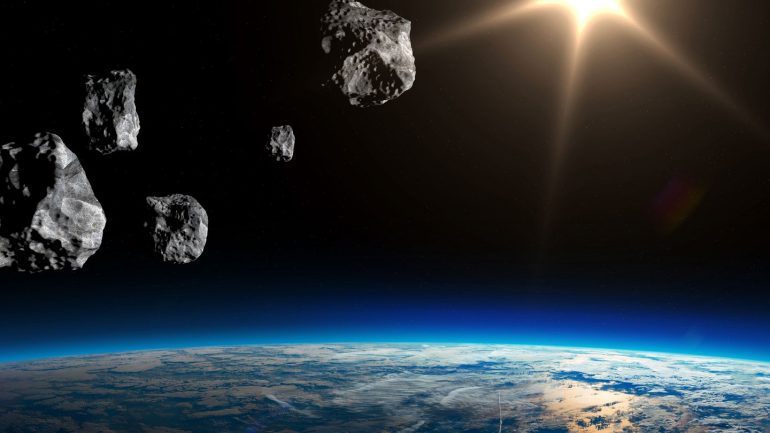Planetary researchers have been confused about the composition of rocks on our Earth for some time now. Because although Earth is basically composed of the same material as asteroids, the atomic composition of the Earth’s crust is different from that of other smaller celestial bodies. A team of researchers has now examined the frequency of certain types of atoms in different meteorites and compared them with samples from Earth. They found a possible explanation for the differences: Heavy rain from meteorites may have repeatedly eroded Earth’s crust during its formation phase and thus changed its composition, as the researchers reported in the journal “Science”. has reported.
About 4.5 billion years ago, our solar system formed from a disk of gas and dust. First, countless smaller celestial bodies formed, which then gradually collided with each other and evolved into asteroids, moons, and planets. Hundreds of thousands of collisions between small bodies were necessary for a planet like our Earth to form. Paul Frossard of the University of Clermont-Auvergne in Clermont-Ferrand and ETH Zurich and their colleagues now wanted to better understand the processes that played a role in this. To do this, they examined meteorites in which the original atomic composition of the material was preserved exactly as it was when our solar system formed.
First, the researchers determined how common specific isotopes are in both terrestrial rock and meteorite material. Isotopes are types of a certain element that differ only in the number of neutrons in their atomic nuclei. Frossard and his colleagues were particularly interested in the ratio of two isotopes of the rare earth metal neodymium – neodymium-142 and neodymium-144. Both isotopes occur naturally, although the lighter neodymium-142 can also be formed during the radioactive decay of the element samarium.
As the analyzes showed, terrestrial rock has a greater proportion of neodymium-142 than neodymium-144 in meteorites. After researchers were able to rule out other explanations with the help of further measurements, there was a valid explanation for this relationship: Unlike asteroids and comets, Earth – like other large celestial bodies – has undergone geochemical processes. Elements such as heavy iron and nickel have sunk into the Earth’s core, and silicates have accumulated in the upper mantle and the Earth’s outer crust. Both neodymium and samarium prefer to combine with silicates, even though they are among the heavier elements – neodymium with those from the Earth’s crust, samarium with the Earth’s mantle. Therefore, according to the researchers, these elements were deposited there in the early times of our planet.
Due to the constant bombardment with small celestial bodies, the crustal material was often destroyed and escaped into space. This reduced the proportion of neodymium in the Earth’s crust—until the continuous hailstorm of meteorites eventually subsided. Meanwhile, the samarium remained deeper in the earth, where it was better preserved. Over the course of millions of years, this isotope decayed into neodymium-142 and then made its way into Earth’s crust—at a time when hardly any other meteorites hit Earth. As a result, an increased proportion of neodymium-142, the decay product of samarium, can be found in the Earth’s crust today.
By comparing numerical ratios, the researchers concluded that up to 20 percent of the material from the apparently young Earth was ejected into space as a result of such a collision—in other words, massive erosion of Earth’s surface. This process may also explain why other elements such as uranium, potassium and thorium are far less abundant than expected in the Earth’s crust.

Internet fan. Alcohol expert. Beer ninja. Organizer. Certified tv specialist. Explorer. Social media nerd.





